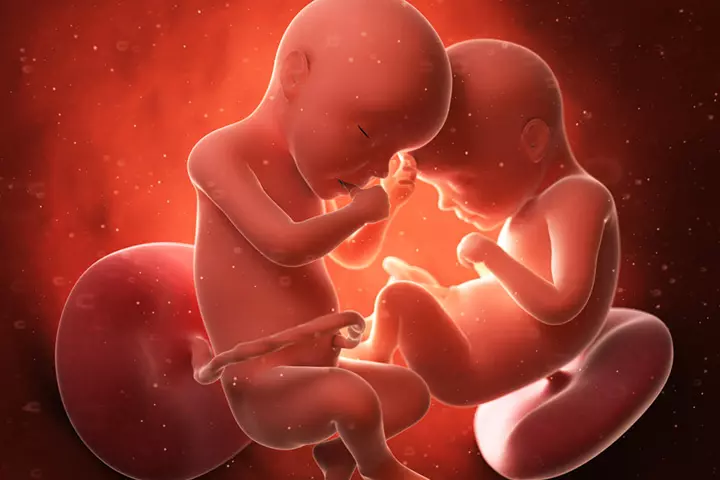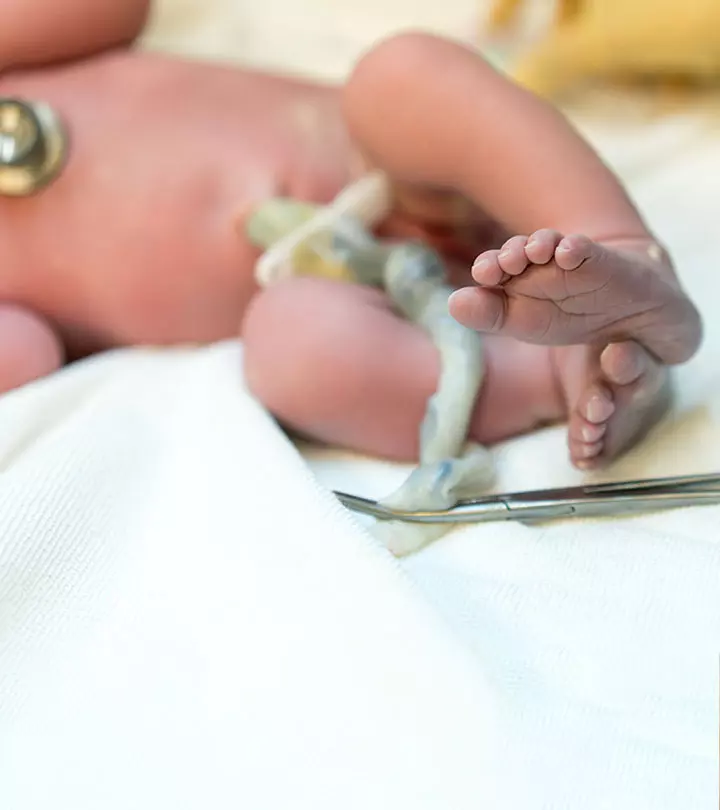

Image: Shutterstock
Babies are God’s cutest creations, and to add the cherry on the cake, we have the twins and the triplets that leave us in complete awe. We love to dress them up in matching clothes and enjoy watching both be similar and different simultaneously. Twins tend to get a lot of attention when they move past a crowd. Having two kids at once does add to the responsibility, but more than that, it adds to cherished and happy memories. Plus, your baby gets his/her companion and is never left alone!

But sometimes, when things don’t go as planned, it leads to complications. In the case of identical twins, a complication gives rise to parasitic twins.
What Are Parasitic Twins?
Image: Shutterstock
During the gestational phase, one of the identical twins stops to develop in the womb. The other twin continues to grow naturally, and hence a parasitic twin is formed. The fully developed twin is the dominant one, while the parasitic twin never develops entirely and has a dysfunctional heart or brain. The parasitic twin then begins to depend on the dominant twin, and if care is not taken, then the functional twin can also get affected and be under significant risk. This condition occurs rarely, and these twins are also termed as vestigial twins (1).
Types Of Parasitic Twins
Image: Shutterstock
Parasitic twins can be categorized into different types based on the position where they are found.
- Fetus in fetu: The parasitic fetus is found in the dominant fetus’s body and is often mistaken as a tumor in ultrasound reports. If the twin isn’t attached to the functional twin internally, it binds to its external body parts.
- Cephalopagus: Here, the parasitic twin is seen to be attached to the dominant twin’s head.
- Epigastric: The parasitic twin is attached to the dominant twin’s stomach.
- Ischiopagus: It is when the parasitic twin is attached to the pelvis.
- Omphalopagus: Parasitic twin connected to the abdomen.
- Parapagus: Parasitic twin attached to the trunk.
- Pygomelia: Parasitic twin attached to the limb/buttocks.
- Pyopagus: Parasitic twin connected to the lower spine of the dominant twin.
- Rachipagus: Parasitic twin attached to the back.
- Thoracopagus: Parasitic twin connected at the dominant twin’s chest.
Diagnosis:
There are no signs to detect a parasitic twin; however, diagnostic methods like ultrasound, 3-D ultrasound scan, MRI, and CT scan can help see the vestigial baby. The diagnostic test results depend on the location of the fetus. When care is not taken, the mothers find out about her parasitic twin at the time of birth (2).
Treatment:
The extent and site of attachment of the parasitic twin to the dominant twin vary in every case and hence requires a different removal method. The success rate of the surgery is determined by various imaging tests done by the doctors. Follow-up surgeries are needed in case of complications where there can be a possibility for the fetus to get a hernia. Several breathing tests and cardio activity monitoring tests are done on the dominant twin to ensure proper health. The parasitic twin is dependent on another individual, just like a virus; it cannot survive independently. Care, along with appropriate precautions and safety methods, should be followed during such cases to save the dominant twin.
Image: Shutterstock
There are no signs and symptoms to look for as such, but it is essential to get regular visits to the doctor to stay stress-free throughout the pregnancy; anxiety is poisonous to mothers and hence needs a doctor’s opinion at every point in their term.
Community Experiences
Join the conversation and become a part of our nurturing community! Share your stories, experiences, and insights to connect with fellow parents.
















